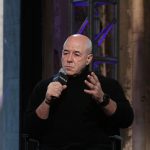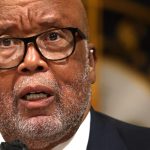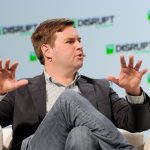Editors’ Blog
 Where Things Stand: It’s Long-Time Giuliani Bud Bernie Kerik’s Turn Before The Jan 6 Committee
Where Things Stand: It’s Long-Time Giuliani Bud Bernie Kerik’s Turn Before The Jan 6 Committee
Longtime Rudy Giuliani ally Bernie Kerik plans to show up for a deposition in front of the Jan. 6 select committee this week. But he might not answer every question that is asked of him.
Read More
TPM Reader GE‘s emails started with a headline “pandemic of the working class” and then referenced a tweet that referenced the same argument …
I am a 69 year old physician who my hospital “aged” me out of in-patient care at beginning of pandemic. I still have frightening outpatient exposures, and I saw/see my younger colleagues recover after they get sick, despite vaccines. I also have 4 children, 2 of whom are in-classroom teachers, and grandchildren attending in-person classes. There is a huge element of unfairness in the workforce today, and I foresee a future bitterness that could explode.
I had a back and forth with GE over this to try to frame the point. What we’re describing here isn’t ‘working class’ precisely, a phrase usually defined in occupational and educational terms while also signifying a set of cultural values. After all, a physician is definitionally not ‘working class’. What we’re describing here is a stark divide between people who can relocate their work and in most cases work from home and those who – in the nature of the work – cannot. In that sense, physicians and really all health care workers, educators and various caregiving and mission-driven jobs fall on the ‘in person’ side of this divide – even though some are highly educated and highly paid. However you define it or what labels you use it is a stark divide in terms of how people have experienced the pandemic, what life or political lessons they’ve drawn from it and how those views impact the future.
Read More
From TPM Reader CN …
Read MoreI wanted to respond to your recent email from a reader LF, published in your editorial piece “Warzone Workplace.”
First, some background on myself – I taught third grade during the pandemic at a private school in the SF Bay Area. When the pandemic hit in March of 2020, like public schools across the state, we immediately were mandated to stop meeting in-person. Unlike California’s public schools, however, our administration pursued an aggressive policy of returning to in-person teaching as soon as we were allowed to do so, and we were back meeting in person in September of 2020, six weeks into the new school year, for those who were comfortable with it, while those who were not attended an online program we also offered. I and the other instructors asked to teach in person did our best, and at the end of the 2020-2021 school year our campus was recognized as a National Blue Ribbon School.

From TPM Reader EA …
Read MoreI’m sure you’re getting a lot of good responses. I think that mostly the problem here is Twitter and when you actually talk to most people you get a lot more nuance in the conversation on both sides.
Big Amen to your writer. I think he/she articulates a completely just and fair position. There’s nothing really to disagree with.
The “other side” of this debate is me – I am a parent of two young kids and I desperately need them to be in school. Even if I were to concede that remote and in-person education are equivalent developmentally (I wouldn’t concede that – they are not), there’s still the matter of how the hell am I supposed to do my job?

From TPM Reader AN (not their real initials) …
Read MoreI’m a public school educator in Wisconsin and I offer this perspective:
When we shut down in March of 2020, we fundentally broke what it means to go to school in this country. All the years building and refining and trying new things . . . broken. We attempted to pivot, but the results were uneven at best and everyone was sacred and we didn’t know what else to do. We did what we thought was best under terrifying circumstances.

Yesterday we discussed the ‘schools must never close’ diehards who dominate much of the current COVID policy debate. I wanted to give you an update on the situation in the New York City public schools because I think it illustrates some Omicron-specific dynamics which haven’t really become part of that discussion. I don’t know precisely how far New York City and DC and other parts of the Northeast are ahead of the rest of the country right now. Maybe it’s like this everywhere. If not, likely it soon will be. But I know it’s like this here and in much of the Northeast. I’m going to reference some personal experiences but only to illustrate things I know are widespread if not universal throughout the city and region.
Read More
A follow-up from TPM Reader LF …
Read MoreIn your recent post about Covid and school closures, I think you get something very right when you talk about the PhD and elite scolds demanding schools remain open no-matter-what. There is one element in all of this that I think you do not fully appreciate—the anger and legitimate fear that teachers have been living with for the entirety of the pandemic.
I am a college teacher, my partner teaches high school, my friends teach at every level of the educational system. During the pandemic, many have retired early or quit, many of those who have stayed have only done so because they are too young to retire and too old to do something else. Just to be clear, the kids are alright. Almost all teachers love teaching–given how shitty the job is, why else would we do it?
 Where Things Stand: Some News Amid The Commemorations And Noise
Where Things Stand: Some News Amid The Commemorations And Noise
A decent chunk of what would’ve been the right’s blusteringly distasteful counter-programming to Congress’ introspective coup-versary commemorations today were canceled last minute.
Read More Who Are the Ivy League Glossy Mag Freedom Fighters Lecturing You About Schools?
Who Are the Ivy League Glossy Mag Freedom Fighters Lecturing You About Schools? 
There’s a deep conventional wisdom out there which has it that liberal Twitter and the broader Blue State commentariat is a hotbed of demands for school closures. The reality is almost diametrically opposed to this. From mid-2020 the country’s most esteemed and prestigious liberal/cosmopolitan publications, electronic broadcasts and university programs have been dominated by voices of highly educated, affluent and mostly white people demanding schools never close, even for brief periods, and almost always in the name of students from minority and/or marginalized communities.
But there is an upside down character to the image these demands create. In fact, during the pre-vaccine period, when significant sections of the country remained in remote leaning, it was precisely these communities which were most resistant to going back to in-person education. The blunt reality is that the staunchest voices against school closures of any sort for any duration are people with PhDs working from home. That’s just the fact.
Read More Where Things Stand: J.D. Vance’s ‘Last Straw’ Was As Shallow As Any Trump Grievance
Where Things Stand: J.D. Vance’s ‘Last Straw’ Was As Shallow As Any Trump Grievance
J.D. Vance’s initially-praised memoir, “Hillbilly Elegy,” was celebrated as a pioneering work when it was first published in 2016. Pundits and conservative intellectuals lionized Vance for his supposed ability to explain a certain type of blue-collar Republican to confused Ivy Leaguers and “establishment” elites who had never met one.
But the once anti-Trump venture capitalist-turned-social commentator has since turned over yet another new leaf, and can be found embracing some of the most bombastic styles of Trumpism as he seeks to elevate his primary race for a Senate seat in Ohio’s crowded primary. As Washington Post writer Simon van Zuylen-Wood outlines in this new in-depth profile on Vance, the author’s descent into MAGAland was complex, and years in the making.
But, per WaPo, the “last straw” that finally thrust Vance into the raging faux-populist arms of Trumpism was about as shallow as some of the former president’s pettiest grievances: the mainstream masses made fun of him.
Read More